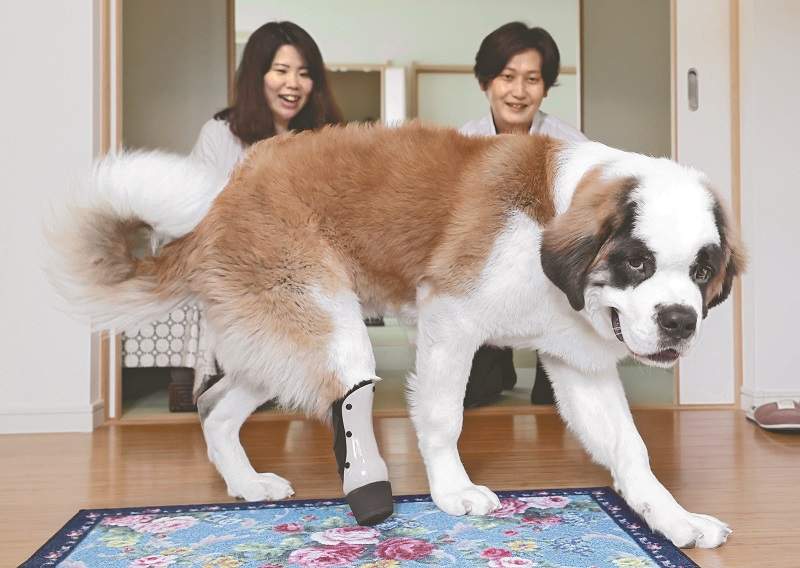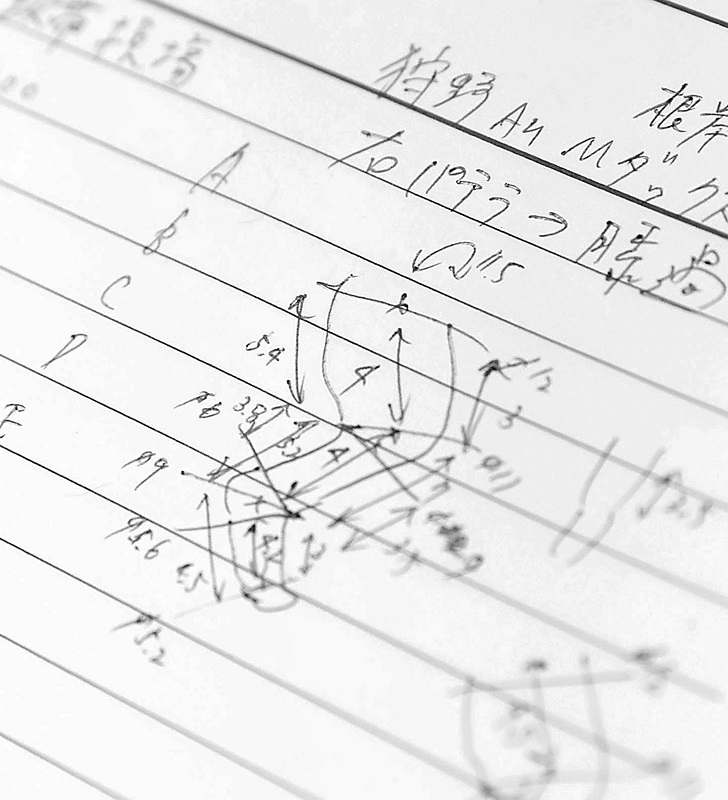Veterinary prosthetic legs help pets take a new step forward

Ayumu, a Saint Bernard, stands up after being fitted with a prosthetic leg in Kunitachi, Tokyo, on Aug. 17.
14:14 JST, September 24, 2022

Shimada checks an orthotic made by sewing together breathable fabric to match the shape of a plaster mold, on Aug. 29, in Machida, Tokyo.
In mid-August, Akio Shimada, 41, a veterinary prosthetist, crafted a handmade prosthetic leg for Ayumu, a Saint Bernard. “I hope this will help him walk a little easier,” Shimada said. The 9-month-old “giant” puppy has no right hind leg and a limited ability to walk.
After Shimada gently attached the prosthetic leg, Ayumu slowly stood up and began to walk, wagging his tail a little.
Hitomi Harada, 32, an animal shelter worker in Kunitachi, Tokyo, requested that the prosthetic leg be made. After Ayumu’s leg was injured and he underwent amputation surgery at a hospital, his previous owner gave him up, saying, “It’s difficult to keep a dog with one leg missing.” Harada looked after the hobbled Ayumu and brought him to Shimada. When Harada saw Ayumu with his prosthetic leg, she said, “He looks so happy to be able to walk properly. I hope he finds a new owner soon.”
Shimada has been manufacturing prosthetics and orthotics for animals and has so far helped more than 30,000 animals that have become partially disabled due to accident or illness.

Shimada’s notebook with detailed measurements of the injured animal’s leg in Tsurugashima, Saitama Prefecture, on Aug. 14.
Growing up watching his grandfather, who lost a finger in a press machine accident, Shimada knew that he wanted to make products that would support people with disabilities. After graduating from high school, he entered a vocational school to become a prosthetist and got a job at a company that manufactured prosthetic limbs.
When he was 22 years old, he found a new mission. He saw his colleague’s Chihuahua at work, its spine broken and wearing a back brace handmade by a veterinarian. He thought to himself, “Animals need special prosthetics, too. I want to try my hand at something that no one has made yet.”
From then on, he began to devote his non-working hours to making prosthetics for animals. After much trial and error, he succeeded in commercializing a back brace three years later.
In 2007, at the age of 26, he opened Toyo Sogu, a company that produces prosthetics and orthotics for animals in Machida, Tokyo. At first, he received only about 20 requests a year, but the company’s reputation spread by word of mouth and now he receives 3,000 orders a year from all over Japan.
“Each animal has a different body shape and symptoms, so we are constantly researching and challenging ourselves,” Shimada said. “We want to help as many suffering animals as possible and reassure their owners.”

The Toyo Sogu workshop in Machida, Tokyo, hums with the sound of sewing machines on Aug. 29. Shimada and his seven employees respond to requests from all over Japan.




